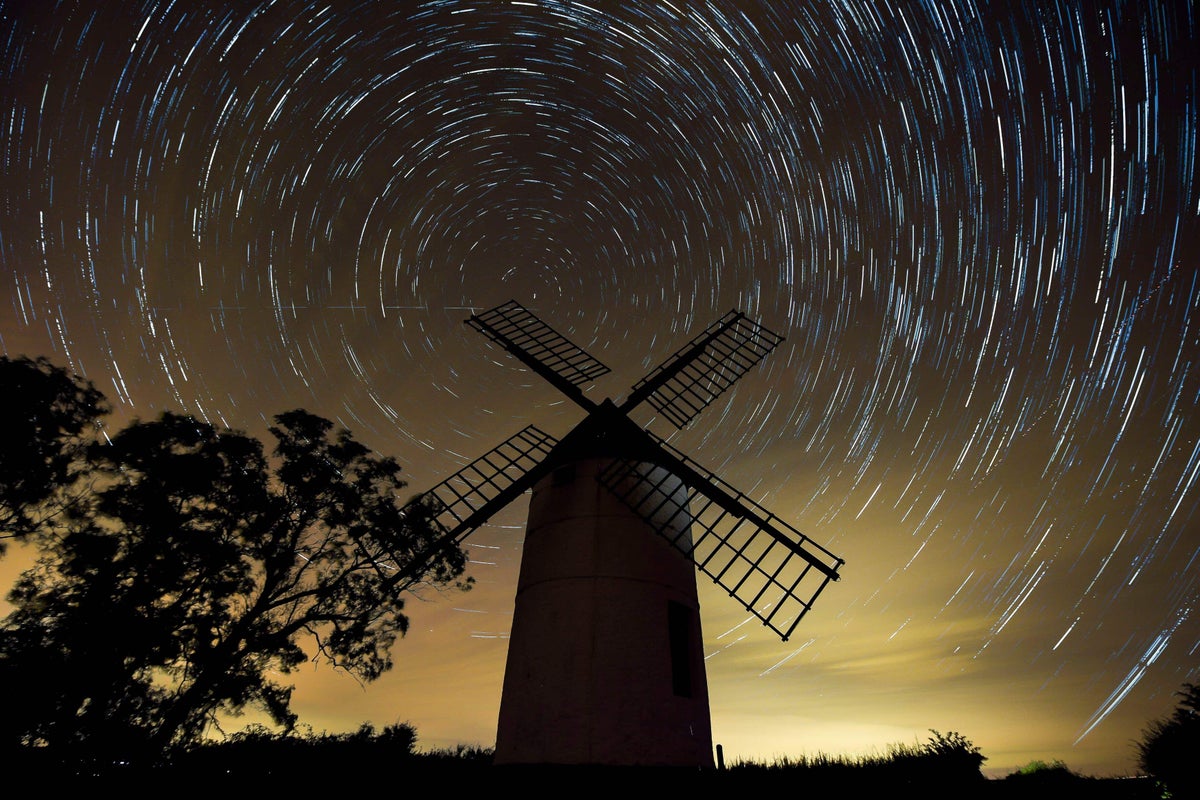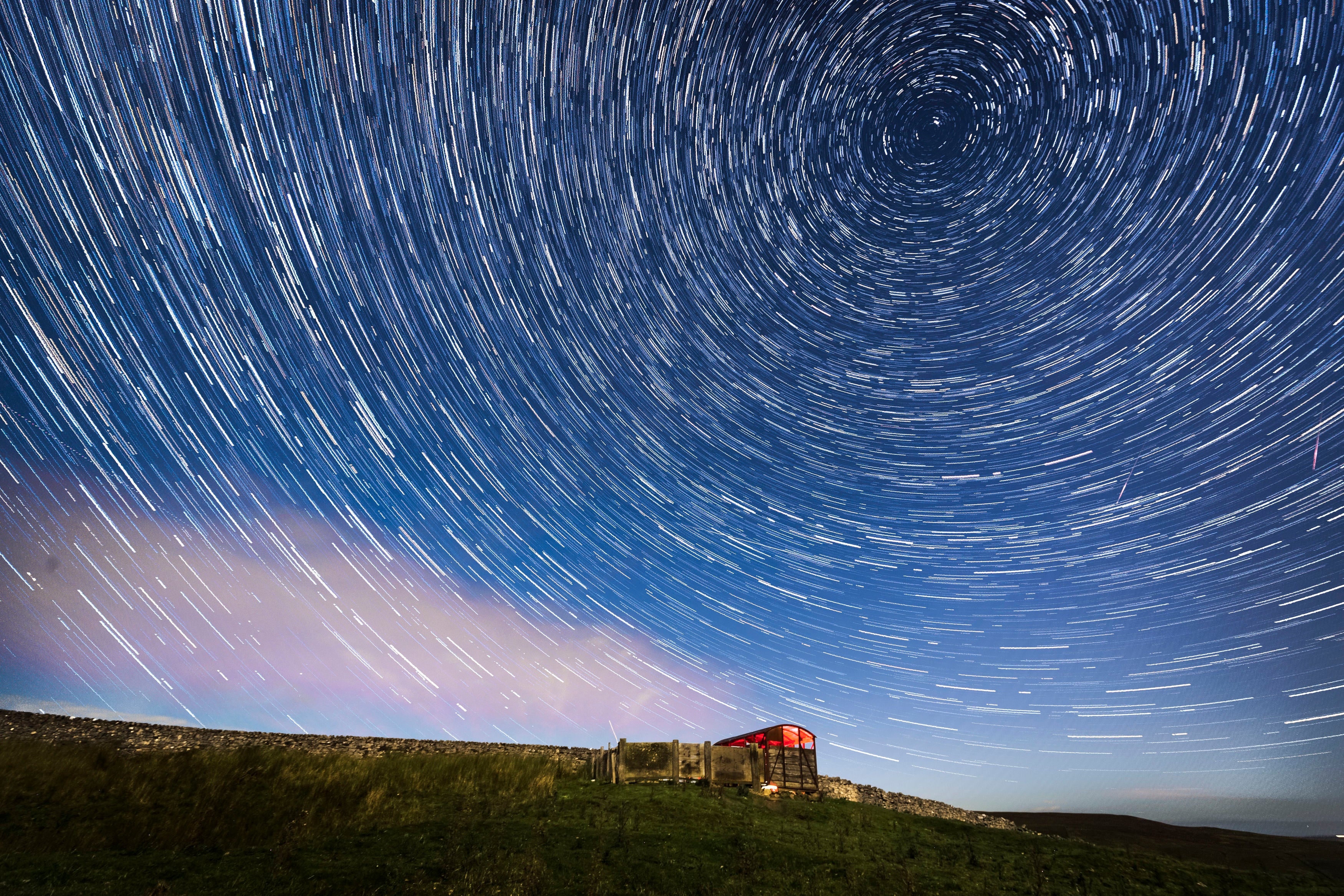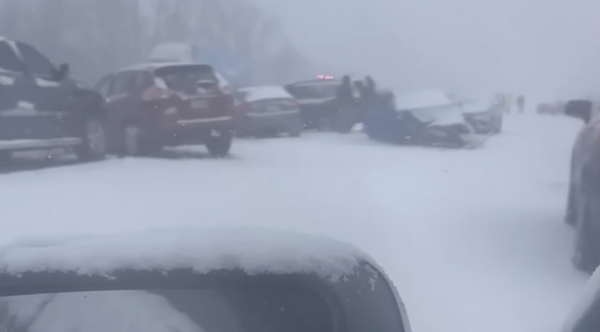
Stargazers across the UK caught sight of shooting stars in the early hours of Wednesday as the Perseid meteor shower hit its annual peak.
Every summer, the Earth slams into a trail of debris from the Swift-Tuttle comet that also orbits the Sun.
Specks as small as a grain of dust or rice flare up under the pressure of the planet’s atmosphere to create shooting stars, said Royal Observatory Greenwich astronomer Dr Ed Bloomer.
Around 150 meteors were predicted to cross the sky per hour but that amount will not be visible because the horizon blocks a full view, he added.
However, an estimated 100 meteors could be seen per hour in certain locations that are particularly flat and dark.
The meteor shower has been running for a few weeks and will continue until around August 24, the astronomer told the PA news agency.
Met Office Chief Meteorologist Dan Suri said there was an increased risk of thunderstorms in parts of England on Wednesday evening.
“By the evening, there is an increased risk of thunderstorms across northern areas, with the potential for some fairly wet weather,” he said.
“Whilst the exact location for these unsettled conditions remains uncertain, it’s possible a warning may be issued closer to the time.”
Clearer skies are expected in the south later in the week, but the weather bureau predicted “cloudier conditions and some patchy rain” for parts of the north.
Dr Bloomer said this means that “we have lots of chances to see this” but “you have to let your eyes adjust to the dark”.
He recommended stargazers wait half an hour to let their eyes get used to it, adding: “Take a camping chair or something – if you had one, you would just sit down, and you would just relax, and you would just wait.
“You want to get away from city lights, you want to get away from street lamps.
“If you’re looking out from your garden – it sounds obvious – but switch the kitchen light off, give yourself time to just put the phone away.”
People struggling to see the meteors can turn and watch through their peripheral vision as it is “a little bit better with low light conditions”, he said.

As it is summer, viewers will also have to wait until relatively late at night for it to be dark enough to see the celestial show.
The astronomer added: “For us, it’s kind of one of the best (meteor showers), it’s kind of reliable, it’s long lived, it’s quite dense… it’s pretty active.
“You don’t need to really be in a very specific location, the hourly rate is fairly high, so I think even beginners will be I think satisfied having seen them.”
The weather is largely clear but early in the week the almost-full waning moon could make Perseid less visible.
The meteor shower will be in the north-east as the sun is going down, Dr Bloomer added.
He said: “However, it’s not available to everybody, because the further south you go… Perseid is lower and lower on the horizon.
“The primary interest is for Northern Hemisphere observers – Perseid is pretty low for us here in the UK, but it is above the horizon… in fact, it’s above the horizon all day, but the problem is, of course, during the day, nothing’s going to be visible.”
Despite it being more visible in the north “the dominant thing is going to be, can you get yourself in a dark location”, he added.
“Getting into the middle of a field in the south east of England, in London, is going to be better than being in the middle of Aberdeen.”
Shooting stars generally only last a second or two and sometimes appear in flurries, the astronomer said.
Rarer meteors the size of a fist or a basketball will produce longer tails and are known as fireballs, he added.
These can last five to 10 seconds, but Dr Bloomer said he has only ever seen one.
The level up is a bolide but “that’s a sort of national emergency type thing”, he added.
The ten technical colleges that will train 40,000 construction workers
Surprising West African ancestry uncovered in early medieval England
Sonya Massey shooting prompts Illinois law requiring disclosure of police recruits' backgrounds
Human rights ‘worsened’ in UK over the past year, says US
Despite all our progress, poverty in the UK is worse than 50 years ago
Euromillions: National Lottery numbers revealed for huge £185m jackpot







